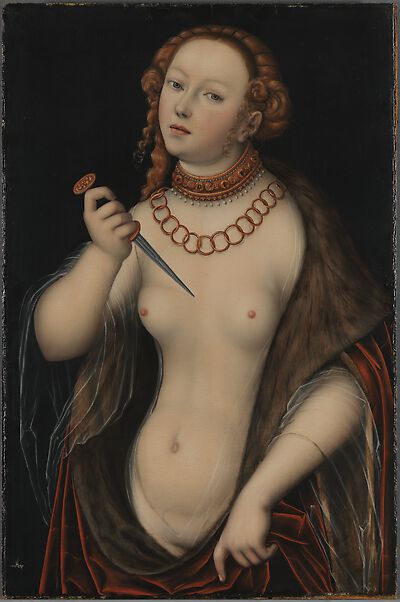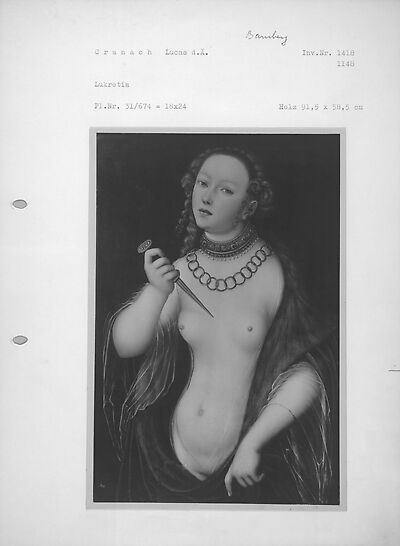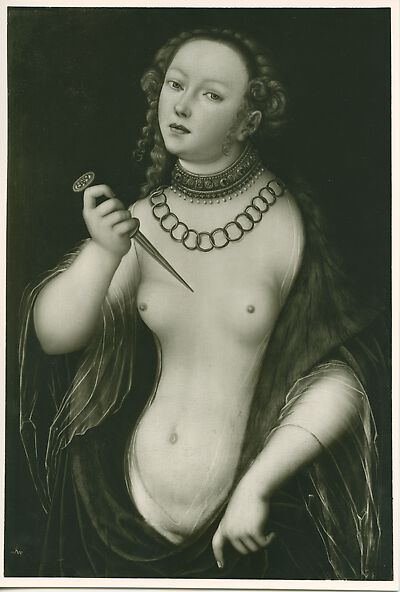The painting depicts Lucretia as a half-length, standing nude figure with an overcoat.
Lucretia is shown inclined slightly to the left and her head follows this direction, whereas her gaze is directed towards the viewer. Lucretia's right underarm is raised and in her hand she holds a dagger. The narrow dagger
The painting depicts Lucretia as a half-length, standing nude figure with an overcoat.
Lucretia is shown inclined slightly to the left and her head follows this direction, whereas her gaze is directed towards the viewer. Lucretia's right underarm is raised and in her hand she holds a dagger. The narrow dagger is positioned between her breasts. In her left, lowered hand she holds a fur-trimmed overcoat, which appears to slide from her shoulders. In addition Lucretia wears a transparent undergarment with wide sleeves.
Her jewellery consists of a neckband richly decorated with pearls and a chain. Her hair is pinned up, but there are a few loose strands.
The background is dark.
According to the legend Lucretia lived in the 6th century BC and was the beautiful and virtuous wife of the roman Collatinus. The roman King's son - Sextus Tarquinius fell in love with her. During a stay in her house Sextus threatened to kill her and shame her honour if she did not surrender to him. After the rape Lucretia had her father and husband vow vengeance and then she stabbed herself. The event led to an uprising in which the royal family was overthrown and the Roman Empire became a Republic.
Depictions of Lucretia who was seen as the epitomy of female virtue, chastity, fidelity and honour enjoyed great popularity, particularly in the 16th century.
[Literature: Bierende 2002, Follak 2002, Livius 1909]





